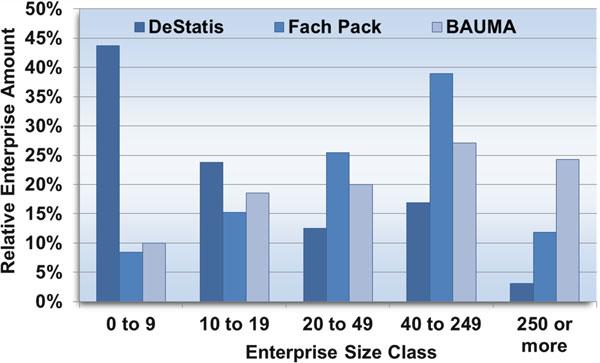86
F. Kauf and J. Kniess
One option to solve this issue might be the optimisation of internal processes, in particular the NPD (Dubs 2004:66–141). However, before the step of process optimising, the SMEs of the equipment industry must be characterised and an overview about existing idea sources and their potentials for NPD is required. This study presents an overview based on the SMEs of the equipment industry for production and packaging plants, which represents the object of interest (OoI). Our purpose is to achieve a deeper insight and understanding of the current situation, i.e. the requirements and existing limitations regarding innovation within SMEs during the economic changes and crisis in the year 2010–2012. In particular, the processes, behavioural rules and individual views in these enterprises are of interest. Therefore we analyse the current situation alongside the typical product life cycle (PLC) for the equipment industry according to Paul et al. (1997:2) and Pahl (2007:99–101), represented by the centre loop in Fig. 10.2.
10.2
Theoretical Background
Today interview surveys (IS) are accepted strategies in research for creating an easily understandable, general and representative real world picture of an OoI. Conceptually a survey is also not tied to any particular philosophical viewpoint and thus can be taken to be objective (Mayring 2010:48–51). Therefore we chose an IS as the basis for this study in order to create an image of the reality on the basis of the subjective view of the relevant interviewees. IS’ are always accompanied with certain limits and restrictions; thus it is crucial for the researcher to consider and rate these issues in order to avoid problems later during the evaluation induced by missing data or incorrect questioning which might lead to a bias. Besides the subjective influence by the interviewee himself (Töpfer 2010:223–224, 234), influences due to choosing the random sample must also be taken in consideration in order to avoid erroneous conclusions (Robson 2009:230; Töpfer 2010:232–233; Wolff, 2010:344–345; Robson 2009:233). This short overview, which does not claim to be complete, shows, that by using IS’, shortcomings will always be included and have to be accepted. Thus, it is relevant to explain the applied procedure and circumstances in which the IS’ have been executed and aimed at, in order to allow the reader make an own rating or judgement of the situation and to avoid the dubiousness some researchers see in the large amount of gathered data which finally can affect its validity (Kumar 2011:149; Creswell 2010:162–163; Töpfer 2010:217–234; Robson 2009:231). For the aforementioned purpose, firstly, the type of study population must be characterised. For this study, it is represented in the business-to-business character of the SMEs of the equipment industry, since the technicians and the entrepreneurs (decision makers) are the group of people who are relevant for evaluating information about methodical product development. Here, a major characteristic of this industry is its distribution over a wide geographical area. This fact motivates us to






